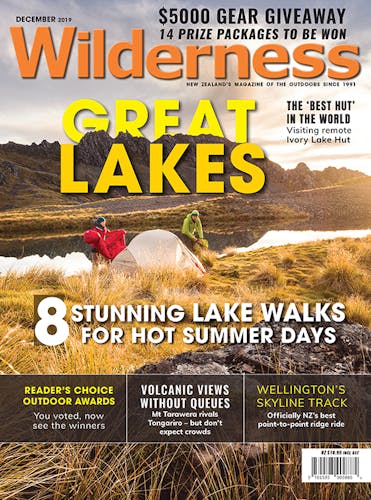Heritage hike, Otatara Pā Historic Reserve, Hawke’s Bay
I have walked over and beside many historic pā sites, but Otatara Pā Historic Reserve near Napier is a standout. This is not only because of the dramatic pouwhenua (carved poles) and palisades that stand sentinel above cliffs on the lower slopes, but also because the views from the high points are amazing.
We started our walk by the car park where there is a carved entranceway with information panels. Since 1987, DOC and Ngati Paarau of Waiohiki Marae have worked together to manage, upgrade and protect the site and we were grateful for the information as, prior to our visit, we hadn’t known the history of the pā.
The complex covers over 40ha and was one of the largest pā in the area, giving access to a range of natural resources. It has great archaeological importance because it has retained its features: Heritage New Zealand has listed the pā as a Category One Historic Place because of its ‘special or outstanding historical or cultural heritage significance’.
We walked up the wide track to the lower part of the site where we could see the palisades on the cliff top, giving us an idea of how formidable this pā would have been. Established in the late 1400s, it was populated for more than 150 years before becoming tapu after fierce fighting between tribes for ownership. The pā was never re-occupied. Pouwhenua here and on the track were erected as memorials to the ancestors of Otatara and Hikurangi.
We climbed to the palisades from where there are views towards Napier and Cape Kidnappers. It’s a green landscape dotted with vines and orchards. Prior to the Napier earthquake in 1931, the low lying area below the pā was a network of shallow lagoons, estuaries and swamps, and there was also a large lake. This area would have provided abundant food as well as being suitable for waka travel. But the earthquake raised the land and the lake was destroyed.
From the palisades, the track led between two pouwhenua and took us steeply up dry hillsides along a narrow track worn into the grass. In the days when the site was inhabited there would have been food gardens on these slopes. Terraces and dwelling sites could also be discerned in the landscape.
From the upper pā on the hilltop, the views were even wider. Inland, rows of hills stretched to the Ruahine Ranges on the horizon. It is said that Mt Ruapehu can be seen on a clear day.
We continued around the hillside, along the northern ridge, to finish the loop at the carved gateway and car park, where we ate our lunch (because the site contains burials and is considered wahi tapu, visitors are asked not to consume food on the pā).
The walk wasn’t long, but it was full of historical and cultural interest. It would have been worth it though, for the views alone.
- Distance
- 1.95km
- Total Ascent
- 127m
- Grade
- Easy
- Time
- 1.5hrs
- Access
- From Springfield Road, south of Taradale
- Map
- BK39
GPX File
- Otatara Pa (gpx, )
GPX File
- Your device does not support GPX files. Please try a different device.








